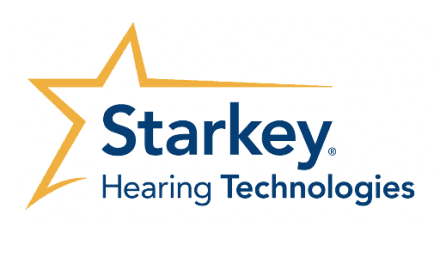Marketing | September 2017 Hearing Review
How to identify three patient segments within your database for new sales
Segmenting your patient database into smaller actionable groups is a powerful technique for increasing hearing aid sales. Here is a simple method for finding three distinct groups of prospects in your patient database and targeting them with the specific marketing messages that will convert them to active purchasers.
One of the key objectives of a marketing plan for a practice should be to generate opportunities for sales. Put another way, the plan needs to bring people in the front door.
Obtaining good sales leads is worth maximum effort in a practice because they represent potential income. Once you obtain a lead, the goal is to convert them, as an “invited” person, into a “visited” person that has a hearing aid evaluation (HAE), and then to a sale, and, ultimately, a service patient.
This article is about identifying and communicating with those you motivate to come in, those who either do or do not actually show up, and those who come in, but do not buy. You must use different selective messages to attract or follow up with each group.
Examining the Database
The first step in reaching out to these collections of like-minded individuals is to examine your database—often a “neglected resource” right at your fingertips. Oftentimes there are new sales opportunities hiding in plain sight, but you need to segment your database into small, actionable groups.
Start by identifying those who have purchased or not purchased. The “not” group can be further divided into inviteds, visiteds, and referrals:
- Inviteds. In this group, identify those you were able to contact but who never scheduled an appointment. Also in this segment are persons who scheduled an appointment but were no-shows or who canceled and did not reschedule.
- Visiteds. For the people who did come in, you need to know which ones were TNS (tested, not sold) and TNC (tested, not a candidate). Also in this group are those who came to the practice for repairs but purchased elsewhere.
- Referrals. This segment may come from several sources, including physicians, other patients, or even learning programs that focus on wellness. These individuals may or may not be familiar with your practice, and may have screened elsewhere. Generally, this group tends to include strong prospects.
What to Do with the Segments
Review these segments, document your assumptions, and look for other similarities within each group. Consider your analysis from their perspective. What motivated each group to respond initially? What value do specific segments see in their relationship with you and your practice? Then ask yourself, what action do you wish to inspire in each of them? Your answers will not be the same across all groups, but it is okay to have some overlap. Strive for the details and try to avoid generalizations.
Messaging
Simply put, messaging is a means to influence others to act. Creating a relevant message is part art, part science. You‘ll send unique marketing messages to each of the three segmented groups: inviteds, visiteds, and referrals.
For the inviteds, you can send messages stressing the benefits of hearing wellness, the value and quality of your practice, or the brands you provide. For all in this segment, the main message must remotivate them to schedule a visit.
For the visiteds, those individuals who previously came in to the practice, you can remind them about your practice’s value and the brands offered. This segment is deeper though, so you can speak to each with more relevance.
For example, with the TNS group, ask for feedback on their visit and if they have questions about the evaluation and results. You want to express empathy for the difficulty they might be experiencing making a purchasing decision and invite them to contact you if they have any additional questions. Assure them that you and your practice are eager to support them throughout the entire process and include testimonials from satisfied patients.
For the TNC group, begin with thanking them for participating in a wellness hearing screening and congratulate them on passing. Stress the advantages of their maintaining healthy hearing and wellness. Promote your mission to connect with the community and screen as many individuals as possible by asking for their help in referring others whom they know need your services. Express advance appreciation for their assistance in encouraging family and friends to schedule a free screening (as they did) by calling your office. Finally, invite them to contact you if they ever need further assistance.
Customers who purchased elsewhere but came to you for repairs are good candidates for future upgrades. Stay in touch with them using messages stressing your brands and your service. Keep inviting them to continue coming in whenever they need service.
For the referrals, your messages may reflect those for persons who were in the inviteds group, but they may not appreciate the importance of hearing wellness. Yet, someone in their life does and gave you their name. Be sure to personalize the message by identifying the source of the referral if you can. Their doctor, friend, or child; each represents a different relationship and importance.
Tactics and Programs
The next step is to deliver the messages to the various groups you have segmented. To do this, marketing tactics need to be planned and executed. Do this by yourself, with dedicated staff, or take advantage of a packaged program from a trusted provider. For example, AHAA offers its network members turnkey products and services specifically designed to support relationship marketing.
Whichever route you choose, tactics and programs to reach the individual segments include periodic emails (or traditional mailings), follow-up phone calls, a responsive website design, a social media presence, and SEM/PPC advertising.
Email marketing: Target only your in-house database segments; do not buy or rent names to acquire new customers. The mailings can be monthly or quarterly and could consist of a newsletter or more personalized formats like holiday or birthday messages. The medium allows for reaching each of the different segments with relevant messages through flexible design and thoughtful planning.
Telemarketing: Phone calling allows you to target segments with personalized messages. Use calling to confirm patient appointments, reach “out-of-warranty” patients, re-motivate cancels or no-shows to come in, or to extend an invitation to a special hearing wellness event. Whomever you’re targeting, you may expect increased sales opportunities and a strengthening of patient relationships, while keeping your schedule filled.
Website design: An entire article can be devoted to ensuring that your website design invites and motivates responses. This marketing activity is best left to professionals who specialize in it. Suffice it to say, it is an extremely important communication medium, and understanding the audiences (as we have outlined here) who look at your website will give you a leg up on competitors.
Social media: This medium demands more attention today. It is an exploding communication tool, and a great way to build brand awareness and reach your followers/patients. Social media can help build your practice’s name in the community and establish credibility for your practice. Here are two places to focus on:
- Start with Facebook. It is important to have a plan for managing social media use. There is a big difference between creating and populating a Facebook company page and planning a social media strategy. You can develop your own strategy with guidance and support from a vendor (eg, AHAA) to help develop content and do the postings for you.
- SEM/PPC advertising: This is Search Engine Marketing, also known as Pay-Per-Click advertising. It requires a management fee plus the cost of media placement through Google AdWords. PPC is an aggressive marketing method that increases traffic to your website. The aim of this marketing tool is to take a patient to a specific offer (not your homepage) when he or she clicks on a paid result listing on a search page. This tool must fit your marketing strategy and budget, but with SEM/PPC you may turn the switch on or off as desired based on seasonality or budget allocations. This is an area where expert professional help is suggested.
Next Steps
As you create your marketing plan, it is beneficial to conduct a full digital marketing and database assessment. In it, you will identify short- and mid-term goals, evaluate your staff and budget capabilities, and get help where needed, and proceed.
There is no doubt that your database is a resource that should not be neglected; rather, it should be used advantageously to reach out to people who can be converted from no sales to sales—helping them hear well again and helping increase your practice’s bottom line.
Acknowledgements
This article is based on a presentation made at AHAA’s annual convention in 2016. More information about AHAA is available at www.ahaanet.com.
Correspondence can be addressed to the authors at: [email protected] or [email protected]
Citation for this article: DeRosa J, Pierangeli L. Get more from a neglected resource! Hearing Review. 2017;24(9):12-14.






